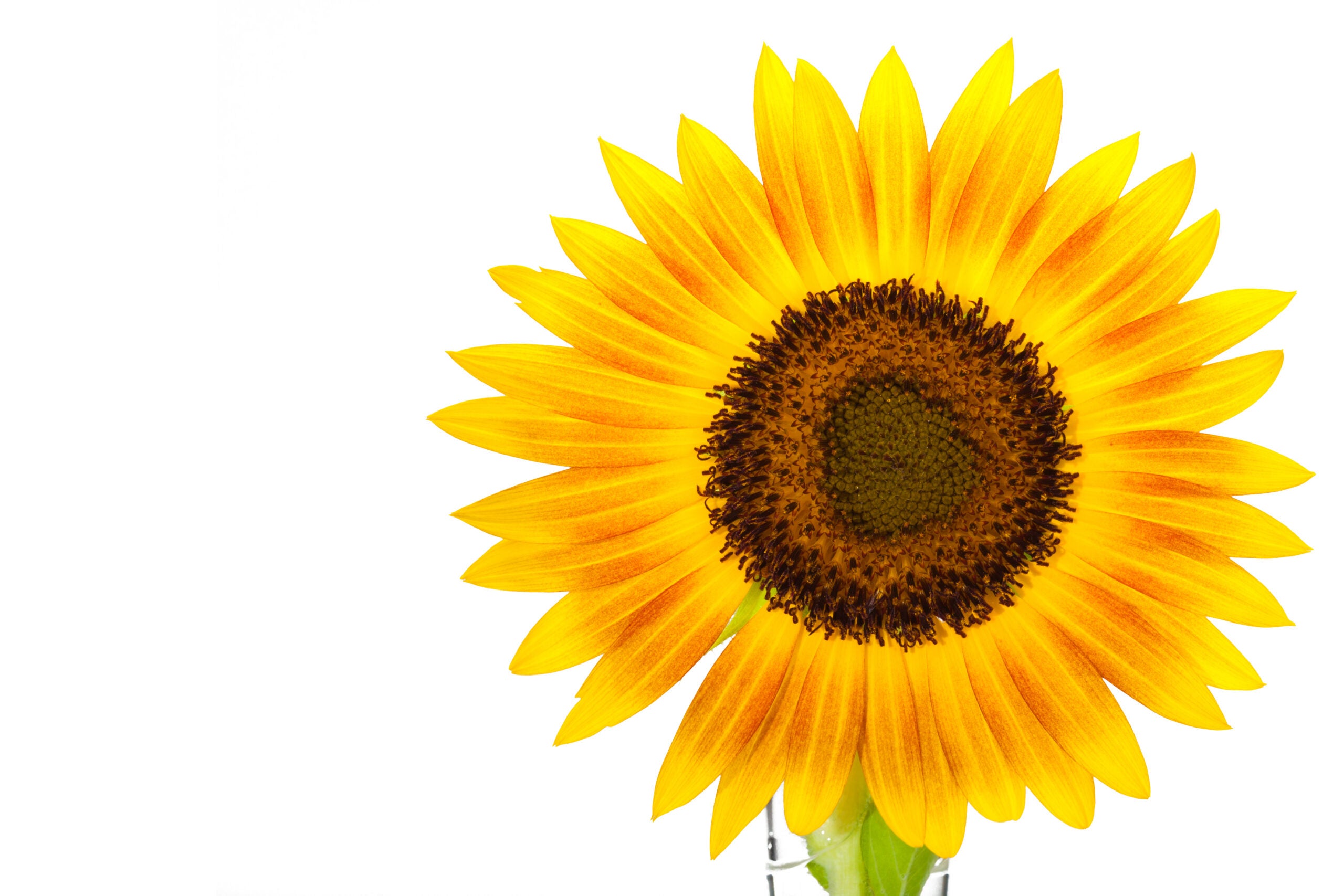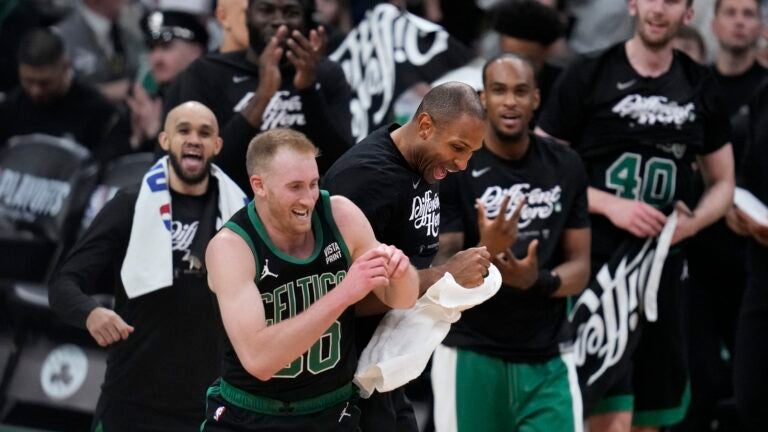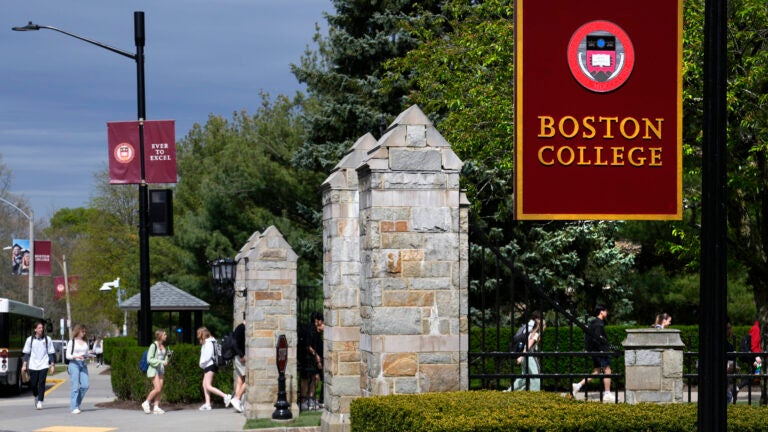Some of those tall, beautiful sunflowers are no friends to bees. Here’s why
Unbeknownst to many consumers, most sunflower seed sold for ornamental use in the United States produces pollenless flowers.

The year of the sunflower, as decreed by the National Garden Bureau, is upon us, and the big summer bloomers are seemingly everywhere. Even the shortest suburban walk provides proof of the enduring popularity — and great diversity — of the annual sunflower. But for all the variation available to American gardeners, most of these plants likely share one trait: blooms that have no pollen.
Most sunflower seed sold for ornamental use in the United States produces pollenless flowers. Unbeknownst to many consumers, this has been the case for decades.
Pollen is the tiny yellow grain that holds sunflower sperm. High in protein, pollen is critical to the survival of native and domesticated bees and floral flies.
Gretchen LeBuhn — a biology professor at San Francisco State University, coauthor of “The Bee-Friendly Garden,’’ and director of The Great Sunflower Project, a long-running citizen-science initiative that tracks pollinator visits to backyard flowers — explains that bees can’t raise offspring on pollenless blooms.
Pollenless sunflowers’ subterfuge may not be fooling bees — who depend on chemical cues while foraging — but given the threats facing pollinator populations, LeBuhn suggested that “if you’re gardening, be sure you get the [sunflowers] with pollen. If you need to have one without pollen on your white tablecloth, go down to the store and buy one.’’
A US Department of Agriculture report on 2019 floriculture crops shows that ornamental sunflowers grown in the United States are a $9 million industry — a low estimate because this doesn’t include blooms grown by smaller producers and sold, for example, at farmers markets. Globally, about 1 billion ornamental sunflower seeds are sold each year, according to an estimate provided to the Globe by American Takii, the daughter company of Takii Seed, an industry leader based in Japan.
John Dole, a professor of horticulture at North Carolina State and the executive adviser for the Association of Specialty Cut Flower Growers, estimates that 90 percent of the ornamental sunflowers grown commercially in the United States are pollenless. That percentage is likely higher still when it comes to the hundreds of thousands of stems harvested weekly in Ecuador and Columbia and imported through Miami.
In the 1980s, the development of pollenless cultivars helped open an entirely new market. Before that, “the sunflower itself was not a major cut flower,’’ Dole said. Then a graduate student, he recalled that he rarely, if ever, saw sunflowers for sale at his local florist. Now it is one of the most popular blooms in the world.
“[Pollenless] was a revolution,’’ Dole said. “It was one of the factors that allowed the sunflower to become what it is today.’’
How did the pollen-free sunflower, bred for big floriculture, slip practically unnoticed into the home garden?
The commercial floral industry and the home gardening market are not parallel sectors. In reality, they constantly overlap, more like a double helix. The story of the pollenless sunflower shows us some of the advantages — and many of the limitations — of an interwoven system.
Native sunflowers are found in all 48 lower states. All wild types produce pollen, as well as nectar and seeds, and are great favorites among pollinating insects, as well as birds and mammals. According to the National Sunflower Association, indigenous peoples may have domesticated the plant even before corn. They ate its seeds and used it for oil, flour, dye, and body paint.
Helianthus annuus, the common sunflower, is no lone star, but a composite flower — an entire galaxy on every stem. The big floral heads are made up of 150 to 1,000 disc flowers packed into the center, surrounded by 13 to 30 bright ray flowers, which look like petals, according to the US Forest Service. Each disc flower has female (pistils) and male (stamens with anthers) parts. Pollenless sunflowers are bred to be male-sterile: Their anthers make no pollen. In modern sunflower breeding, nature need not take its course.

Because its reproductive cycle is forever incomplete, the pollenless sunflower will not begin seed production, it often blooms earlier, and its vase life is longer than that of its pollen-full brethren — another boon to the floral trade.
In the revealing language chosen by the seed catalog writers, sunflower pollen is almost universally described as “messy’’ — a threat to the tablecloth. As tablecloths have disappeared from the modern home, tablecloth trauma dates this type of propaganda to the more formal 1990s, which is indeed when it was first conceived. Allergies rarely merit a mention because, unlike grasses and many trees, sunflowers are pollinated by insects, not wind. The burden being eased by pollenless sunflowers is the toil of tidying up, the age-old stigma of stain.
In 1986, the global seed purveyor and plant breeder Sakata Seed, based in Yokohama, Japan, introduced Sunbright, the first pollenless ornamental sunflower. The innovation was part of a string of other industry modifications that would help make the ornamental sunflower more uniform and dependable, and thus less of a financial risk for commercial growers.
The 1990s were boom years for the sunflower, and in some places its ease and speed of growth made it more attractive than the rose.
In 1991, Takii Seed released Sunrich Lemon, a pollenless cultivar that flowered 10 days earlier than the rest of the market. In 1992, it debuted pollenless Sunrich Orange, which the company says is the world’s most popular ornamental sunflower.
Back in 1976, California-based sunflower breeder Tom Heaton was working in oil-sunflower production, but bred ornamentals as a hobby. He recalled that with “oil seed sunflower … everything’s the same color. It’s kind of boring after a while.’’
In 1996, Heaton introduced a pollenless red sunflower called Chianti. He is also the originator of the popular, all-pollenless ProCut series, available in white, plum, bicolor, and beyond.
Heaton, founder of current venture NuFlowers LLC, sells hundreds of millions of seeds yearly and said he offers the most color varieties on the market. In 2009, The Sunflower Magazine reported that Heaton’s seeds comprised almost 75 percent of the US ornamental market.
At Johnny’s Selected Seeds — a Maine purveyor that caters primarily to small commercial growers and to a lesser extent to home gardeners — sunflowers are the top flower crop. They sell tens of millions of sunflower seeds yearly, and Heaton’s ProCut Orange is their No. 1.
In 1974, when Johnny’s printed its first catalog, two sunflower types were offered: Arrowhead, for edible seed production, and Peredovik, a Russian cultivar best suited to oil manufacture; both produced pollen. The 2021 online catalog — which lists some 60 sunflowers — is different.
“It’s mostly pollenless,’’ explained Hillary Alger, product manager for herbs and flowers at Johnny’s. “Gosh, I think there’s like three or four varieties that do produce pollen.’’
As commercial breeding has focused on pollenless cultivars, pollen-full types have been left behind.
“The industry is breeding for pollenless,’’ Alger explained, “so all the improvements and innovation [are in pollenless cultivars]. … Pollenless comes along with things like earliness and improved stems and novel colors.’’
But consumer tastes may be shifting. Perhaps breeding will follow suit.
“Over the last handful of years,’’ Alger said, “we’ve had more and more inquiries about pollen-producing sunflowers as people become more aware of supporting native beneficials.’’
Historian Gene Tempest can be reached at [email protected]. You can see more of her work at genetempest.com. Subscribe to the Globe’s free real estate newsletter — our weekly digest on buying, selling, and design — at pages.email.bostonglobe.com/AddressSignUp. Follow us on Facebook, LinkedIn, Instagram, and Twitter @globehomes.






Conversation
This discussion has ended. Please join elsewhere on Boston.com